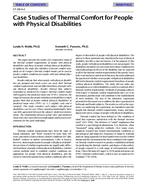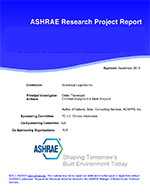This research focuses on developing a framework for coupling detailed air models with building energy and load calculations. The complete-mixing model for room air has long been used for such calculations although there are concerns that it might be deficient when air temperature is not uniform because of buoyancy-driven flow. Nodal models developed by Mundt (1996) and Rees (1998) were implemented, and a new momentum zonal model was developed for testing the framework with load-calculation routines based on Pedersen’s (2001) implementation of the Heat Balance Model. The Heat Balance Model has been reformulated to use an array of zone air temperatures. The coupling framework defines near-surface air temperatures for surface convection calculations and determines system flow rates using model predictions for temperature at the air system returns and a room-air control location. The research project generated a “toolkit” of source code and documentation that facilitates incorporating room air modeling into building load and energy computer programs and provides a convenient method of testing different air models with the Heat Balance Model. The toolkit contains a versatile test program that performs detailed, hourly load calculations for a single thermal zone where both network and three-dimensional airflow models have been coupled tightly to the load calculation routines. In running the test program, the effect of air models on sensible load was found to be minor except where modeling involves aggressive diurnal thermal mass strategies or operative temperature controlling. Displacement ventilation nodal models, such as the Rees and Haves model, appear practical to implement in load and energy programs and would be expected to provide results for air system flow rate and return air temperatures. Results show computing time increases of about a factor of four for nodal models compared to the mixing model. A momentum-zonal model was developed based on a finite-volume formulation of the Euler equation for inviscid flow and found to produce reasonable results for non-mixing room air situations. This research also investigated pressure-zonal air models by Lin (1999) and Inard et. al. (1996) and found that the non-linear formulations appear problematic for routine building simulation.
Product Details
- Published:
- 2003
- File Size:
- 1 file , 5.4 MB
- Product Code(s):
- D-28810


